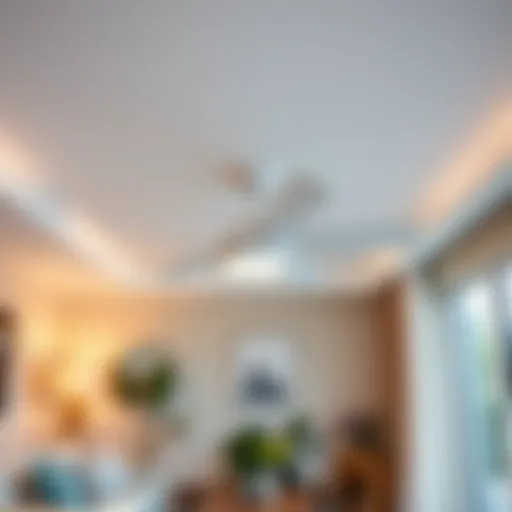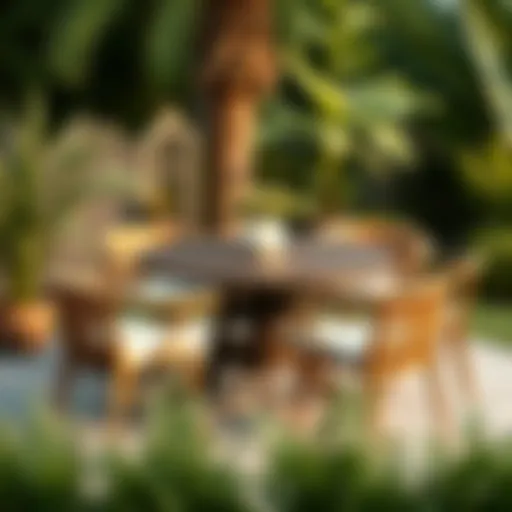Exploring 36-Inch LED Shop Light Fixtures: A Complete Guide
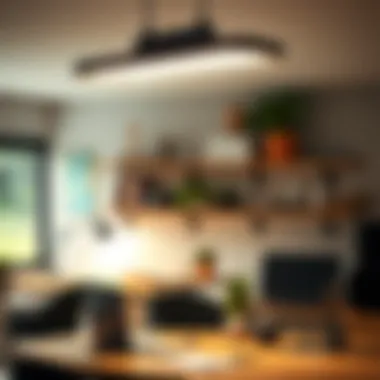
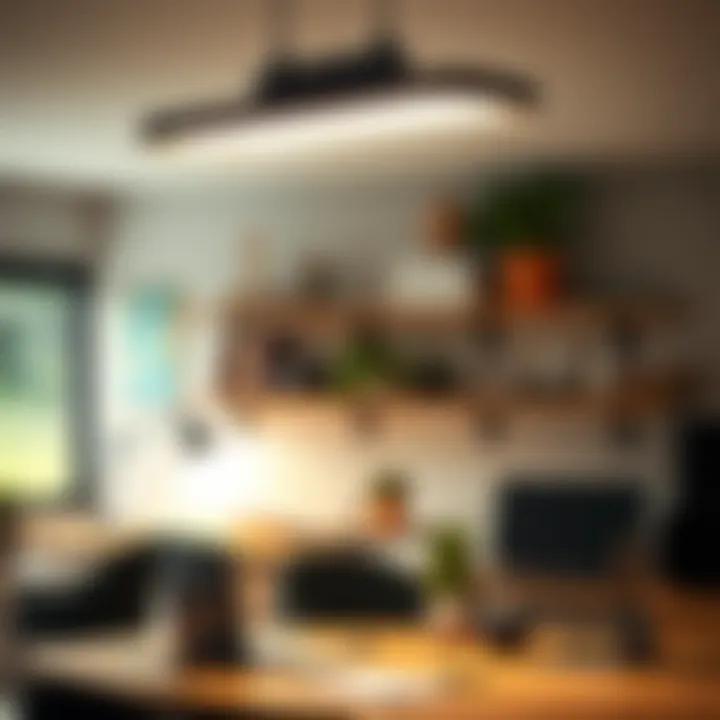
Intro
In today's fast-paced world, light fixtures are more than just practical solutions for day-to-day activities; they play a vital role in shaping how spaces are perceived and utilized. Enter the 36-inch LED shop light fixtures, which represent the confluence of functionality, innovation, and aesthetic appeal in modern lighting design. From workshops to retail floors, these fixtures cater to a wide array of applications, making them essential tools for both professionals and everyday consumers alike.
This article focuses on everything you would want to know about these fixtures—from their cutting-edge designs to energy-saving advantages, practical installation processes, and tips for maintaining their effectiveness over time. We will also explore how these lights can radically enhance the environments they illuminate. So, whether you're an interior designer refining a retail space or a business owner looking to optimize your lighting, this guide is packed with insights designed just for you.
Understanding the Basics of LED Shop Light Fixtures
Lighting isn’t just about illumination; it sets the mood, boosts productivity, and enhances safety. In any workspace, whether it’s a bustling garage, a commercial shop, or a cozy workshop, the right lighting can transform the entire atmosphere. Understanding the basics of LED shop light fixtures becomes essential, especially when considering how these tools can optimize functionality and efficiency. In the following sections, we’ll cover specific elements that frame the significance of adopting LED technology in your workspace.
Definition and Key Features
LED shop light fixtures are innovative lighting solutions designed to provide efficient and long-lasting illumination. They stand out due to several defining features:
- Energy Efficiency: Unlike traditional light fixtures, LED lights consume less energy, translating to lower electricity bills.
- Longevity: With lifespans typically reaching 25,000 hours or more, they significantly outlast incandescent and fluorescent bulbs.
- Low Heat Emission: LED lights convert most of their energy into light rather than heat, leading to safer working conditions.
- Instant Light: They light up immediately upon switching on, eliminating warm-up time common with other types of lighting.
- Diverse Designs: Available in various styles, these fixtures can fit into numerous design themes, from sleek and modern to rustic and traditional.
Choosing the right fixture demands careful consideration of these features, ensuring that the selected lighting aligns with the specific requirements of your workspace.
Importance of Lighting in Workspaces
Proper lighting plays a pivotal role in enhancing productivity and reducing fatigue in a work environment. Here are a few reasons why understanding lighting is crucial:
- Visibility: Good lighting directly impacts how well tasks can be performed. Some jobs require precise skills; poor lighting can lead to mistakes or accidents.
- Mood and Motivation: Bright, consistent illumination can uplift spirits, encourage focus, and even stimulate creativity. Spaces drenched in light can feel more welcoming and alive.
- Safety Considerations: Especially in areas where heavy machinery is used or in locations with lots of electrical tools, adequate lighting helps prevent mishaps. Shadows can hide hazards, increasing risks in environments like workshops and warehouses.
"The right lighting can make all the difference. It’s not just about seeing; it’s about enhancing the experience and safety of your workspace."
By grasping these foundational concepts and recognizing the tremendous value they bring to workspaces, one can start making informed decisions regarding the selection and implementation of LED shop light fixtures.
Characteristics of 36-Inch LED Shop Light Fixtures
When it comes to choosing lighting for various settings, understanding the characteristics of 36-inch LED shop light fixtures is fundamental. These fixtures are not only about illuminating a space but also about enhancing its functionality and aesthetic appeal. They belong to a family of lighting that effectively balances performance, efficiency, and design, making them appropriate for many environments.
Dimensions and Design Considerations
The dimensions of 36-inch LED shop light fixtures play a crucial role in their effectiveness and usability. Predominantly designed to fit seamlessly into a variety of settings, their length allows for strategic placement, whether in a workshop, garage, or a commercial space. When selecting a fixture, one must consider the height of the ceiling, the layout of the space, and what tasks are being performed beneath the light. For example, if the ceiling is particularly high, a 36-inch fixture might not offer sufficient coverage unless multiple units are installed.
The design also encompasses features such as the fixture’s build quality and aesthetics. A well-designed fixture is not only visually appealing but can also facilitate better light distribution. Take, for instance, fixtures that come with reflectors or diffusers; they can help reduce glare and ensure a more uniform light output across surfaces.
Light Output and Lumens Explained
Understanding lumens is essential when assessing any light fixture. Unlike watts, which measure energy consumption, lumens quantify brightness. A typical 36-inch LED shop light can range from 3,000 to 4,500 lumens, depending on its design and intended use. Higher lumen ratings are beneficial in situations requiring enhanced visibility—think industrial settings or large workspaces where precision is key.
To illustrate, a fixture with 4,000 lumens will provide approximately three to four times the brightness of a standard incandescent bulb. This output allows for improved clarity and reduced eye strain, making it ideal for detailed work.
It's also essential to consider how light output affects color rendition. Many fixtures provide details about their Color Rendering Index (CRI), which is vital for achieving true-to-life color in applications like painting or craftwork.
Color Temperature and Its Significance
Color temperature, measured in Kelvins (K), can drastically influence the mood and functionality of a space. In practical terms, a 36-inch LED shop light typically offers a range between 3000K to 6500K.
- 3000K presents a warm white light, which can make spaces feel cozy and inviting, ideal for places like cafes or retail environments.
- 4000K typically yields a neutral white light, often used in office settings for its balance of warmth and clarity.
- 5000K to 6500K offers bright, cool daylight, frequently utilized in workshops and garages to ensure precision and visibility during tasks that demand high concentration.
Choosing the right color temperature is a matter of understanding the space’s purpose. Using the wrong color temperature can lead to discomfort or decreased productivity. Therefore, making an informed choice on color temperature along with proper light output is essential for optimizing both functionality and ambiance.
Choosing the right characteristics of a 36-inch LED shop light fixture isn’t just about the specs; it’s about creating an environment that suits your needs and aesthetic sense.
Consideration of these characteristics not only leads to improved performance but also enriches the overall experience of the environment. When thoughtfully selected, 36-inch LED shop light fixtures can transform perceived spaces, enhance worker efficiency, and offer sustainable options without compromising on style.
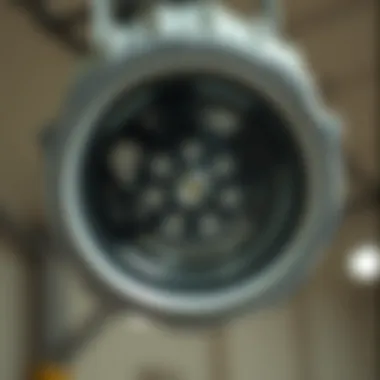
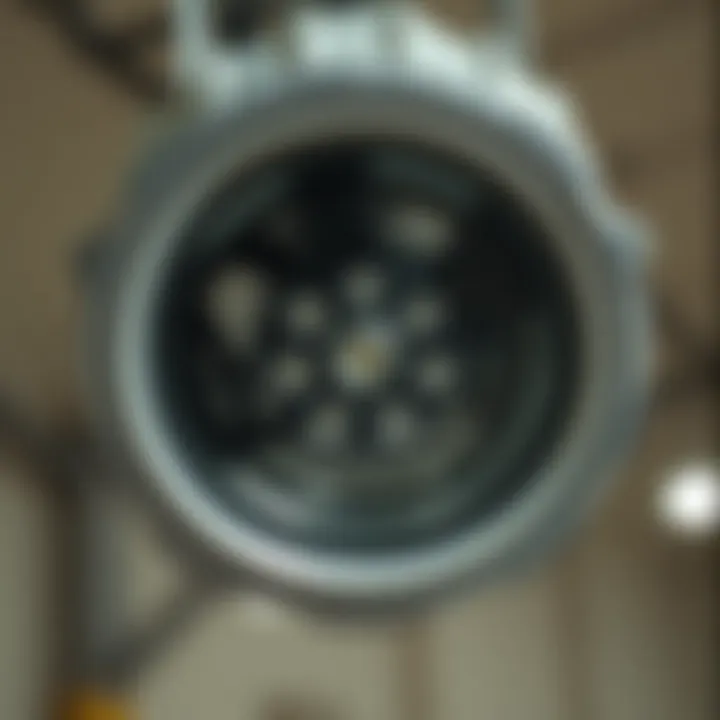
Applications in Various Settings
The versatility of 36-inch LED shop light fixtures makes them suitable for diverse environments. The relevance of understanding their applications spans across different sectors. Recognizing where and how these fixtures fit into various settings not only highlights their practicality but also allows users to optimize their workspace for efficiency and safety. Let’s break down some specific applications to showcase their benefits and unique considerations.
Commercial Spaces
In commercial environments, proper illumination plays a pivotal role in creating inviting atmospheres. Showrooms, retail floors, and business offices all require effective lighting to enhance both functionality and ambiance. 36-inch LED shop light fixtures offer a bright, energy-efficient solution, significantly reducing operational costs while improving visibility.
- Aesthetic Appeal: The sleek design of these lights can blend seamlessly into modern commercial interiors, enhancing overall aesthetics.
- Enhanced Customer Experience: Well-lit spaces can increase product visibility, making items more appealing to customers. Studies have shown that lighting can influence purchasing decisions. A well-lit checkout area, for example, can lead to impulsive buys.
It’s essential to consider placement and layout when installing these fixtures in commercial settings. Spacing them evenly and ensuring proper alignment can minimize shadows and enhance brightness throughout the area. As with any lighting design, flexibility is key; various mounting options are available to accommodate different ceiling heights and layouts.
Industrial and Warehousing Applications
In more rugged environments like warehouses or manufacturing plants, struggles associated with poor lighting can impede productivity and pose safety hazards. Here, LED shop lights not only provide the necessary brightness but also offer durability to withstand the rigors of an industrial setting.
- Robustness and Longevity: These fixtures are designed to endure impacts and vibrations. When you’re working in a bustling warehouse, the last thing you want is fragile lighting.
- Energy Efficiency: The lower energy consumption of LED lights is particularly beneficial in expansive spaces where lighting can be a significant part of the utility bill. With a lifespan often exceeding 50,000 hours, switching to LED can save both time and money on replacements.
Placement considerations in industrial settings must prioritize functionality, such as illuminating workstations, aisles, and exits. Safety protocols often require bright lighting in these areas to reduce accident rates. Additionally, the light’s color temperature can influence worker efficiency and morale. Cooler temperatures can stimulate focus while warmer tones may create a more relaxed atmosphere.
Home Garage and Workshop Usage
The home workshop or garage deserves thoughtful lighting, as it’s often where handypersons spend countless hours tinkering and crafting. 36-inch LED shop light fixtures shine in these environments by providing adequate brightness while being energy efficient.
- Task Lighting: For intricate projects requiring detail, adequate lighting becomes indispensable. Placing fixtures above workbenches ensures thorough illumination for tasks such as woodworking or automotive repair.
- Cost-Effective Solution: Many homeowners overlook the expenses associated with traditional bulb replacements. By investing in LED lighting, you’re opting for sustainability without breaking the bank on electricity bills.
Beyond just functionality, these fixtures can enhance the overall aesthetic appeal of a garage or workshop, transforming it from a mere storage space into a well-lit creative hub. Consider using dimmable LEDs; they provide flexibility for different projects and moods.
"Proper lighting can turn an average workspace into something inspirational."
Ultimately, when it comes to choosing fixtures for these settings, considering the unique needs of each environment will ensure maximum benefit. From boosting sales in retail spaces to ensuring safety in warehouses, 36-inch LED shop light fixtures prove to be indispensable tools across the board.
Energy Efficiency and Sustainability
In contemporary discussions about lighting, energy efficiency and sustainability have moved to the forefront of consumer and designer priorities alike. Choosing 36-inch LED shop light fixtures represents not just a leap in lighting technology but also a significant step toward reducing energy consumption and maximizing sustainability.
When it comes to lighting, the implications of efficiency can be profound. Understanding how these bulb choices directly influence both the environment and operational costs is vital. With rising electricity bills, businesses and homeowners alike seek solutions that offer lasting benefits without compromising quality.
Comparative Analysis with Traditional Bulbs
In the olden days of incandescent bulbs, lighting was only considered with respect to brightness and aesthetics. Fast forward to modern times, and people are more discerning. LED fixtures outshine traditional bulbs---literally and figuratively. For a practical point of reference, a 36-inch LED shop light typically utilizes about 40-60 watts, whereas the equivalent incandescent might guzzle double or triple that amount.
"Today's lighting solutions are not just about illumination; they symbolize a journey towards a more sustainable future."
So, what’s the deal with lumens and energy consumption? A 36-inch LED can produce around 4000 lumens. Contrast that with a traditional bulb which often requires substantially more wattage to deliver similar light output. This difference not only translates to lower energy bills but also less strain on power plants, thereby supporting a greater cause of eco-friendliness.
Long-Term Cost Savings
The lamp's upfront cost often alarms potential buyers, but let's talk turkey. When you factor in longevity, that initial expense starts to feel like a drop in the bucket. A standard LED shop light lasts up to 50,000 hours, whereas traditional bulbs might cap out at around 1,000 hours. This staggering difference means fewer replacements, reduced labor costs, and ultimately, a healthier bottom line.
Consider a breakdown:
- Initial Investment: Yes, LED fixtures are pricier upfront.
- Energy Costs: Over time, savings accumulate, offering a counterbalance to the initial cost.
- Replacement Costs: Less frequent replacements mean fewer disruptions and added expenses.
Long story short, the investment pays back over time making LED fixtures a smart choice for the frugal (or financially aware) shopper.
Environmental Impact Reduction


Focusing on sustainability doesn’t just spotlight numbers on a ledger. It has far-reaching consequences for our planet. Traditional bulbs contribute to greenhouse gas emissions, with a considerable carbon footprint from both manufacture and disposal. In contrast, LED fixtures are not only more energy-efficient but also less hazardous. They contain no harmful substances like mercury, which is often found in fluorescent lights.
Switching to LED lighting such as a 36-inch fixture not only reduces energy consumption but also mitigates waste in landfills and lower overall carbon emissions. By making the switch, individuals and companies can play a more active role in protecting the environment. Here are some key areas where impact is notable:
- Reduced energy consumption lowers demand on fossil fuel power plants.
- Less waste associated with the lifespan of lighting choices.
- Improved recyclability of LED materials as more recycling programs pop up.
In summary, the benefits of choosing 36-inch LED shop lights extend beyond immediate cost savings. With energy efficiency and sustainability intertwined, this choice plays a crucial role in shaping a brighter future both literally and figuratively.
Installation Process of 36-Inch LED Shop Light Fixtures
The installation of 36-inch LED shop light fixtures is a vital aspect of ensuring optimal functionality and performance in any workspace. Proper installation not only maximizes the benefits these lighting solutions provide but also enhances safety and efficiency. An effective lighting setup can make all the difference in visibility, which is crucial whether in industrial spaces or personal garages.
This process involves careful planning, the right tools, and adherence to safety protocols, making it important for both professionals and DIY enthusiasts. Underestimating the installation phase can lead to potential hazards or subpar lighting performance, hence the need for a structured approach.
Necessary Tools and Equipment
Before diving into the installation process, ensure you have the appropriate tools and equipment. Each of the items below plays a role in achieving a smooth installation:
- Drill and Drill Bits: Essential for making holes in the ceiling or wall to mount the fixtures securely.
- Screwdrivers: A Phillips and flathead screwdriver will be necessary for securing fixtures and adjusting wiring connections.
- Wire Strippers: Useful for peeling back insulation from wires to make secure and proper connections.
- Voltage Tester: Ensuring that the power is turned off before starting installation is paramount. A voltage tester helps confirm safety.
- Ladder: Depending on the height of your ceiling, a sturdy ladder will be important for reaching the installation site easily.
- Mounting Hardware: This can include hooks, brackets, or screws that come with the fixtures or need to be sourced separately.
Gather these tools before proceeding. It prevents any time wasted during the installation phase and helps maintain the flow of work.
Step-by-Step Installation Guide
Once you've gathered the right tools, it’s time to roll up your sleeves. Here’s a straightforward guide to getting those shop lights up:
- Turn Off the Power: Go to your circuit breaker and switch off the power supply to the area where you will work. This step ensures safety during installation.
- Determine Placement: Before you start drilling, plan how you want to distribute your fixtures according to the workspace layout. Consider potential shadows or areas that require more light coverage.
- Mark Drill Points: Use a pencil or chalk to mark where the mounting brackets will go. Ensure they are evenly spaced and aligned according to your layout plan.
- Drill Holes: Use your drill to create holes where you marked them, making sure to choose the right drill bit for the surface type (drywall, concrete, etc.).
- Mount Fixtures: Secure the mounting brackets by inserting screws into the drilled holes. Ensure they are tightly fastened so the light fixtures will be stable after installation.
- Connect Wires: Follow the manufacturer’s instructions to connect the wiring from your light fixture to the existing electrical supply. Strip the wires as necessary and twist them together securely.
- Attach Fixtures: Once the wiring is connected, attach the light fixtures to the mounted brackets. Ensure everything is fixed properly.
- Restore Power: Head back to the circuit breaker and switch the power back on, turning the lights on to test your work.
- Final Adjustments: Check for any loose wiring or fixtures and adjust accordingly to ensure everything is secure.
Safety Precautions to Consider
Keeping safety at the forefront of any installation process is paramount. Here are some vital precautions to keep in mind:
- Use Personal Protective Equipment (PPE): This includes safety goggles and gloves while handling tools and fixtures.
- Work with a Partner: If possible, have someone else with you during the installation to assist and ensure safety in high places.
- Use the Correct Ladder: Always ensure your ladder is stable and on level ground. A fall can lead to serious injuries.
- Check Local Codes: Be aware of local building codes and regulations regarding electrical installations. Following these helps maintain safety and compliance.
- Avoid Wet Conditions: Do not work in damp conditions as moisture increases the risk of electrical shocks.
- Take Your Time: Rushing installation can lead to mistakes, potentially compromising safety and performance.
Taking these precautions will enhance safety, ensuring both the installation process and the final lighting solution operate effectively.
Maintaining Your LED Shop Light Fixtures
Maintaining LED shop light fixtures is crucial for ensuring longevity and optimal performance. These fixtures have become a staple in various environments—from commercial spaces to home garages—due to their efficiency and adaptability. However, their functionality can diminish over time without proper maintenance. Regular upkeep not only enhances the lifespan of the fixtures but also maximizes lighting efficiency, contributing to both safety and productivity in workspaces.
Regular maintenance can catch problems before they worsen, save costs on replacement fixtures, and provide a consistent quality of light that can significantly influence work quality.
Routine Maintenance Practices
To keep your LED shop lights shining bright, incorporate the following maintenance practices into your routine:
- Regular Cleaning: Dust and dirt can obscure light output. Gently wipe down the fixtures with a soft cloth or a mild cleaning solution to keep them clear and bright. Remember to turn them off and disconnect power while doing this.
- Check Connections: Periodically inspect the wiring and connections for any signs of wear or damage. Loose connections can cause flickering or even complete failures.
- Inspect for Water Damage: In environments where moisture may be present, check for any signs of water seepage. Water can severely compromise electrical components, leading to malfunctions.
- Replace Components: Some models allow for replacing specific parts such as drivers or lenses. If you notice degradation, consult the manufacturer’s guidelines, and replace parts as needed rather than the entire fixture.
- Monitor Light Output: Keep an eye on the brightness of the LEDs. If they appear dimmer than usual, it might indicate a need for cleaning or component inspection.
- Schedule Professional Inspections: Consider engaging a technician to conduct yearly inspections of your lighting system, especially for large installations. They can check for issues not readily apparent to the untrained eye.
Troubleshooting Common Issues
Despite good maintenance practices, issues may still arise. Knowing how to troubleshoot common problems can save a great deal of time and hassle:
- Flickering Lights: This could be due to a loose connection or a faulty driver. Begin by ensuring all connections are tight and secure. If flickering persists, consult the product manual for driver troubleshooting steps.
- Dim Lights: If your LED shop lights seem to lose brightness, it might be time for some maintenance. Clean the fixtures, check connections, and consider if the ambient environment may be affecting their performance.
- Lights Not Turning On: Verify that power is reaching the fixture. Inspect the circuit breaker and ensure no fuses have blown. If these are fine and it still doesn't work, it might be a sign of a more serious electrical issue—consult an electrician.
- Overheating: LED lights generally remain cool, but if a fixture feels notably hot, it could indicate a malfunction. Turn it off immediately and allow it to cool. Inspect to ensure ventilation is not blocked.
- Unusual Noises: Any buzzing or humming sounds from fixtures can point to electrical issues or internal component failure. Turn the light off and consult with a professional, as leaving it unattended might lead to further damage.
By following these maintenance practices and keeping common issues in mind, you can extend the lifespan and performance of your 36-inch LED shop light fixtures. Regular attention to these details can lead to significant savings and a well-lit, safe environment.
Choosing the Right Fixture for Your Needs

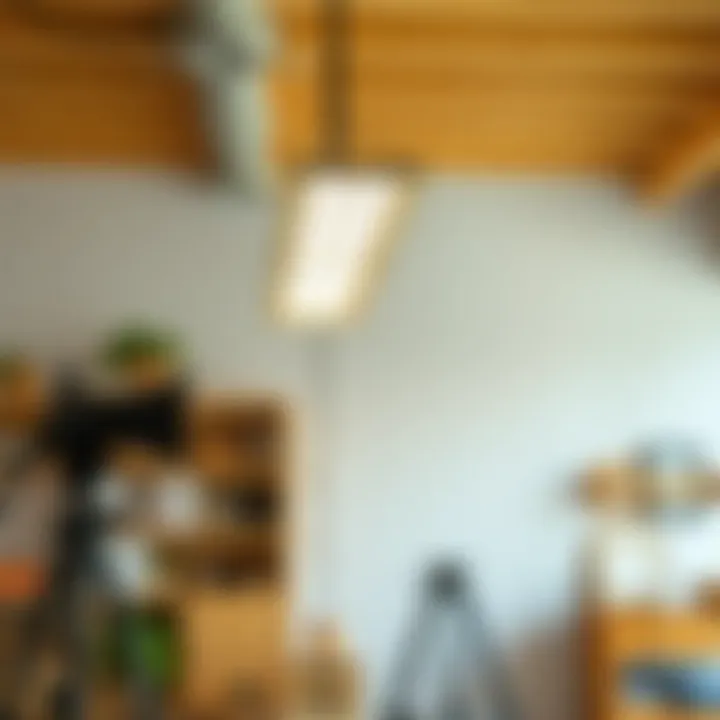
Selecting the appropriate 36-inch LED shop light fixture for your space can be a pivotal decision. It goes beyond just aesthetic appeal; the right choice can significantly enhance functionality, optimize energy use, and create a productive environment for various applications. This section will unpack the essential criteria to consider when choosing a fixture that meets your specific needs.
Evaluating Light and Space Requirements
Before making any purchase, it’s crucial to assess the dimensions of the space where the lighting will be installed.
- Ceiling Height: The height of your ceiling plays a major role in how light is distributed. If the ceiling is too high, you might find that the light does not reach the surfaces you intend to illuminate.
- Room Size and Layout: A larger room may require multiple fixtures to ensure even lighting. Conversely, a smaller or more confined space could benefit from fewer, higher-powered lights. Planning this out can save you both time and money.
- Task Lighting Needs: Are you illuminating work surfaces? If so, specialized task lighting might be necessary to prevent shadows from interfering with your activities. Always think about the specific tasks you’ll undertake in that space.
These considerations will help you choose fixtures that provide adequate light output measured in lumens.
Assessing Budget and Quality
Once you've got a grip on your lighting requirements, it's time to look at the financial side of things. Budgetary constraints are common, but investing a bit more upfront in quality fixtures can lead to significant long-term savings. Consider the following:
- Initial Purchase Price: Cheaper fixtures might seem enticing, but may not provide the longevity you desire. It's worth investigating what you’re getting per dollar spent.
- Energy Efficiency: Opt for energy-efficient LED lights. Although they may cost more initially than traditional bulbs, their energy savings can pay off in the long run.
- Lifespan and Warranties: Look for products that offer solid warranties. A good warranty can be a sign that a manufacturer stands behind their product, which is often a reflection of quality.
Taking the time to evaluate these factors means you won’t find yourself stuck in a situation where poor quality fixtures lead to higher costs over time.
Brand Comparisons and Product Recommendations
Brand reputation can be a big indicator of quality when it comes to LED shop lights. Some of the trusted brands you might want to consider include:
- Hyperikon: Known for its durable build and various styles. Ideal for both DIYers and professionals.
- Lithonia Lighting: Offers a range of commercial-grade fixtures suitable for industrial applications.
- GE Lighting: Provides reliable products that are well-regarded for their performance and energy efficiency.
Here are a few aspects to compare among brands:
- Light Quality: Check customer reviews to understand how well each brand’s lights perform in real-world applications.
- Customization Options: Some brands allow for customization in terms of color temperature, dimming capabilities, and design styles.
- Availability of Parts: Consider whether replacement parts are easily obtainable, as this could affect the longevity of your investment.
Ultimately, comparing these elements will help you find a fixture that not only fits your needs but also offers value for money.
As you navigate through your options, keep in mind that the right LED shop light fixtures can transform your workspace into an efficient, well-illuminated haven.
Future Innovations in Lighting Technology
When considering the ever-evolving landscape of lighting solutions, it's hard not to focus on the innovations that shape the future. Technology advances at a dizzying pace, and lighting is no exception. In the realm of 36-inch LED shop light fixtures, these innovations hold particular significance for a variety of reasons. They ensure a better, more efficient lighting environment while also aligning with modern standards of sustainability and automation.
Smart Lighting Integration
Smart lighting isn’t just a buzz phrase; it’s rapidly becoming a part of everyday life. These integrated systems allow for extensive control over lighting, improving both functionality and energy usage. With smart LED shop lights, users can adjust brightness, color temperature, and even timings right from their smartphones or through voice commands.
These fixtures often come equipped with sensors that can detect movement and adjust the light output accordingly. For instance, when there’s activity in a workspace, the lights brighten, and when the area is vacated, they dim or turn off altogether.
"Technology is what you make of it. In smart lighting, this means harnessing innovations to craft an environment tailored to your needs."
The ability to control lighting easily through apps or automation systems not only adds a layer of convenience but also contributes to significant cost savings over time. With energy-efficient options now integrated into smart systems, it's no wonder designers and architects are increasingly advocating for this technology in their projects.
Trends in Sustainability and Design
Sustainability isn’t just a trend; it’s a necessity in today’s design landscape. As consumers demand more eco-friendly solutions, the development of LED shop lights reflects this shift toward sustainability. Modern designs not only focus on energy efficiency but also aesthetic qualities that are appealing in various commercial and residential settings.
People today want fixtures that not only serve a function but also enhance the overall ambiance of the space. The seamless blend of form and function gives rise to a generation of stylish LED lights, offering adjustable color temperatures and innovative designs that can fit any aesthetic, from sleek industrial looks to more cozy, homey environments.
Moreover, many manufacturers are embracing sustainable materials in their production processes. Materials that are recyclable or sourced responsibly are becoming more common, and businesses are rethinking their entire supply chain to minimize environmental impact.
Adopting these trends is more than just good practice; it's good business. Incorporating sustainable design can increase market appeal and invoke trust among environmentally-conscious consumers. As technology becomes more integrated with design principles, the future of lighting will undoubtedly reflect a commitment to both innovation and sustainability.
Epilogue and Final Thoughts
As we draw our discussion to a close, it becomes evident that LED shop lights, particularly the 36-inch fixtures, are not just another option in the lighting market. They represent a significant advancement in energy efficiency and practical application for varied settings, from bustling commercial spaces to quiet home workshops. The benefits of integrating such fixtures are manifold, impacting not only the aesthetic and functional aspects of a space but also extending to environmental considerations, cutting down on energy costs over time.
Recapping the Benefits of LED Shop Lights
LED shop lights bring forth several advantages that merit a recap. Here are some of the key takeaways:
- Energy Efficiency: One of the most touted features of LED technology is its remarkable energy efficiency. Compared to traditional incandescent or fluorescent lights, LEDs use significantly less power to produce the same amount of light, which manifests as lower energy bills.
- Longevity: The lifespan of a 36-inch LED fixture is typically several times longer than that of traditional bulbs. This durability means less frequent replacements, ultimately translating to lower maintenance costs.
- Quality of Light: LED fixtures provide a bright, clear light, which can significantly improve visibility in workspaces. The color rendering ability of LED lights tends to be superior, making them ideal for tasks that require precision, such as crafting or mechanical work.
- Versatile Applications: The 36-inch design is particularly adaptable, fitting easily in diverse environments. Whether hung in a workshop or integrated into a retail setting, these lights can meet a variety of lighting needs with grace.

